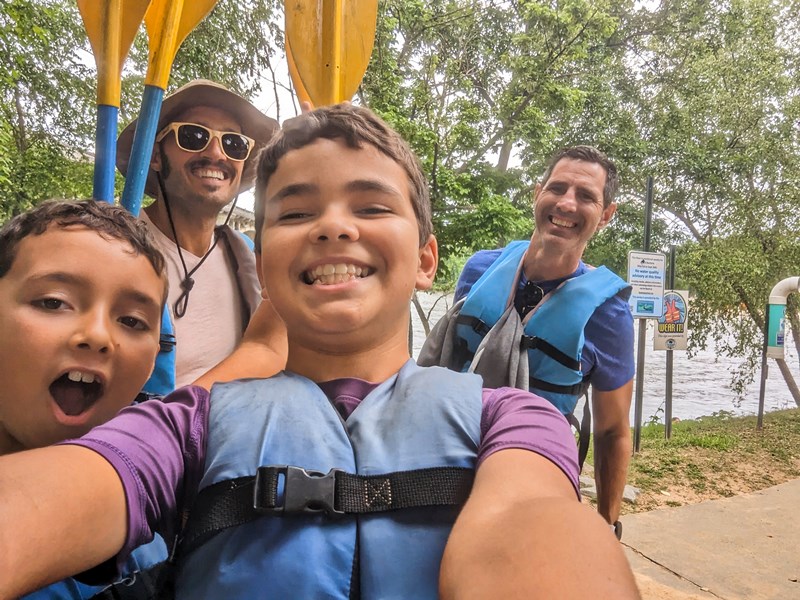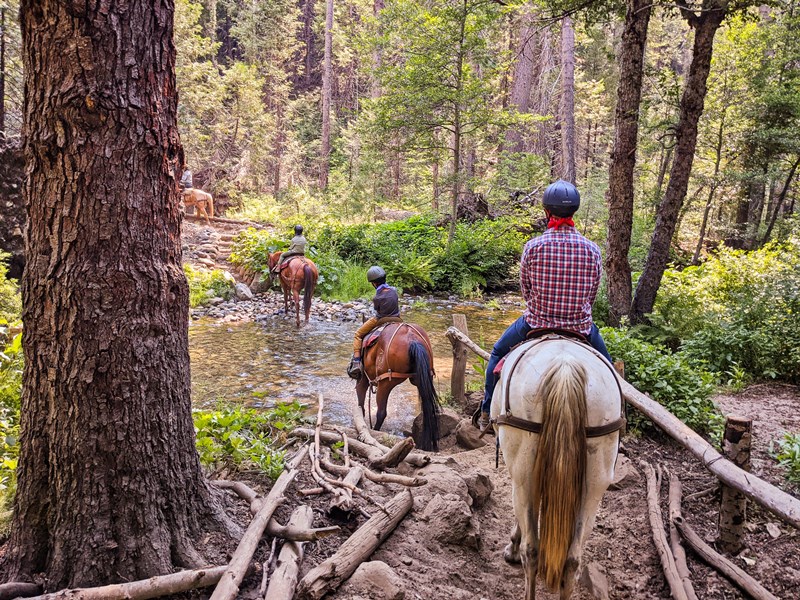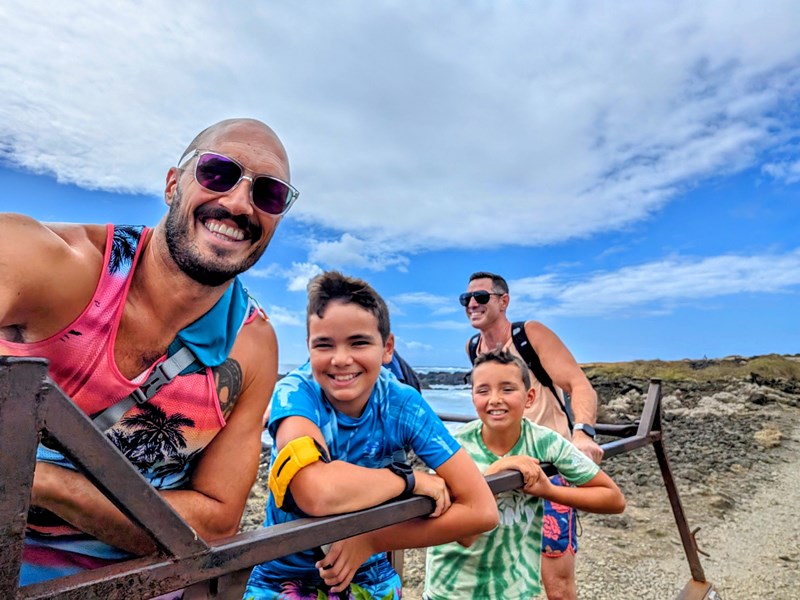By: Rob Taylor, 2traveldads.com
Being a small business is difficult for myriad reasons, but one of the biggest is being able to effectively market yourself to consumers who aren’t physically present in your location. You can pay oodles of cash for static advertising in print publications and cardstock collateral, but there are better ways to get the word out and have somebody else tell YOUR story.
Yes, I’m talking about social media, but I’m also talking about beneficial partnerships at the local level that reach much further than you might expect. Buckle up and take notes because you’re going to get a simple and effective plan to up your small business marketing game without a huge cost to you. Here’s what we’re going to cover:
-
Benefits of Storytelling vs Ads
-
Methods of Storytelling Marketing
-
Building and Leveraging Relationships
-
First steps

What is a Storytelling Campaign
I talk about storytelling all the time, so to me there’s no mystery there, but if this concept is new to you, here’s just what it is. A storytelling campaign is a plan you form and execute to get others to talk about your brand or experience. The most common way this takes shape today is by hosting a content creator of some sort so they can gain the first hand knowledge and opinion of what you sell. A storytelling campaign fits right into your daily operations and should LOOK NO DIFFERENT to either the creator or your staff from any other guest experience.
When you’re hosting a writer or influencer, they should be experiencing things just as any other guest would. It behooves nobody to set up a special experience for your storyteller if it’s something regular people either cannot book or unlikely to book. You want to host an experience that’s remarkable and precisely what anyone else can PAY YOU FOR.
Too many times we’ve been brought onto projects with destinations or guide services and have been told that we’re getting a special experience… and then it’s nothing we can write about because nothing like this is available to somebody who’s just looking to explore with their family. The rare exception to this is when there is a storytelling project that is focused on top tier or once in a lifetime experiences for an audience with the desire and funds to book it. Example: hosting an exclusive preview of a top tier travel experience that will soon be available for public booking with a creator who can guarantee placement in front of the target audience.
The Benefits of Storytelling
First of all, Return on Investment (ROI) is always difficult to measure when it comes to marketing, but that’s nothing to worry about when you consider going the route of storytelling as a marketing MO. Because working with a storyteller (aka writer, blogger, influencer…) is fully driven by the creative person you’re working with, the budget for this type of marketing is much smaller usually than if you were to do a fully ad agency marketing shoot and campaign. This doesn’t mean you don’t need to budget for it, but that you’ll be able to creatively and effectively market your brand with great cost savings.
You can expect the following costs for planning a storytelling project:
-
Employee wages - but probably already paying for this
-
Per PAX insurance cost - does need to be absorbed by host
-
Experience supplies - if lunch is provided, gear depreciation…
-
Content fee - this is rarely the case for a storytelling project as an experience provider, but if you’re working directly with a creator for the purpose of ONLY showcasing your brand, a fee should 100% be expected.
As we’ll get into below, hosting a storyteller typically is a part of a larger destination project, so quite often the primary costs of a project like this are absorbed by the local tourism entity. Where this starts to cost a host is when they start requiring media assets from the creators they host. If you’re looking to hold rights to the work somebody else is doing, you should be paying the creator for their work. You can execute a successful storytelling campaign without gaining assets, and you can also ask for rights, but the moment you require it, you’ve chosen to enlist somebody for a run of paid work.

Storytelling Marketing Methods
Taking the approach of storytelling marketing, you’ve got lots of ways the message and inspiration can reach your intended audience:
-
written in print
-
written online
-
videography
-
podcast / audio journal
-
social media
Each of these story formats serves a different purpose and can reach a different audience… and at a different stage in their planning. Every business model runs differently and the approach you choose needs to match your goals. Here’s where choosing the right type of storytelling matters. Is your goal to reach new clients, to inspire interest at the research stage, to create a piece of marketing that’s bookable, or to have your story immortalized in print?
Let’s look at that last one: yes, it’s great to see a story about yourself or your business in print, but unless it’s a top travel magazine and your product is meant for the demographic that purchases paper journals, you might need to rethink if this is your goal. In my opinion as somebody who writes both online and in print, the value of print placement is far less than online.
Stories written online, both in major travel websites and smaller niche publications, can have a very long life and reach far beyond print circulation. Online mentions and stories can be linked to endless articles across the web, they can be updated with new information and offerings, and online publishing can include actionable links to secure business. Stories online are just the start of a giant web of potential.
When it comes to stories landing in the video / podcast / AV style, they can reach a more visually or audibly inspired audience who needs to get their information and inspiration in a different way to see what’s possible for them. From that style of story there are many ways to lead them to a bookable experience.
The last of the more simple and effective storytelling marketing approaches is via social media. This is a bit more complex because of how social media has grown and changes month to month. Hosting a storyteller, you have an opportunity to support somebody else sharing from their own literal point of view. Social media, both live and crafted, really can capture the interest of a broad age range and varying backgrounds. With social media storytelling you get to help somebody open others’ eyes to what YOU do and how special and unique YOUR experience is. And as a bonus, with social media you can reshare the imagery and first person point of view, and in some cases, arrange with the creator to have access to the data following their storytelling. And again, it’s bookable.
Building Beneficial Relationships
So now that you see what storytelling can be and how it can be an effective business driver, how do you actually get storytellers, get creators to share what you’ve got going on? It’s actually easier than you might expect and you’re probably already on the path to making it happen. Built into your locale, you’ve actually got a team at some level whose job it is to support YOU as a small business.
Who do you start with for getting somebody else to tell your story:
- CVB - Convention and Visitors Bureau
- DMO - Destination Marketing Organization (often hired by city/county/state)
- Chamber of Commerce - membership based, but may be valuable to join
- Industry Organization - journalist and partner directories
Each of the above entities works to promote visitation of their area, and a part of that is showcasing the unique offerings in their region. This means that if the city, county, coalition or state is bringing in somebody to cover the area for a story they will be in need of local partners that are a part of the tourism experience. If you don’t know how to get in on this sort of storytelling marketing activity in your region, here’s how you can set yourself up for success:
-
be active with your local destination PR and Marketing team
-
be flexible and available to host people who can share your story AND MAKE IT KNOWN
-
earn a reputation for being unique in your niche
-
be accessible - find ways to accommodate diverse needs, diverse patrons and varied interests - this includes physical disabilities, sensory processing challenges and people with unknown but limited capabilities
There’s so much to be said for taking an active role in the promotion of a tourism region. Sharing your needs and successes with those who work to bring guests to you helps them do their job better, and if you’re able to support that objective that, in turn, supports other businesses and strengthens the community… which makes people want to visit and so the cycle continues.
If you don’t know who to reach out to in your area to make yourself available or become active in local tourism promotion, simply visit your regional and state tourism websites and follow the links for Media. This is where journalists, creators and other storytellers will head to make contact with somebody to support a story they want to work on. This team is typically composed of Public Relations and marketing professionals, and even if they aren’t the ones directly coordinating journalist visits, they work with those who do or can point you to them.

Getting Started
A.) The first step to successfully leverage others to tell your story is to set a goal. Are you hoping to garner a spotlight or simply to ensure continued customer base growth? Are you expanding your business or offerings and need to get the word out or are you planning a new shoulder season experience? What is the story you’re aiming to get in front of the world?
B.) Once you know what you would like to accomplish (not necessarily what output you want), then you can consider your budget. Typically, the ROI for hosting a single creator can be marked with just one, and in some cases, two bookings resulting from a storytelling partnership. Knowing that, you can determine what you consider to be a max budget across a season. If you’re working with bloggers and influencers to tell your story, many are a part of tourism affiliate networks so they also benefit from sharing their experience (and they can track their bookings).
Tip: while some businesses do not want to participate in affiliate booking partnerships because it pulls from the final payout per guest, storytellers who rely on affiliate income to support their own business will often opt to share experiences that they can monetize. Even when I’m not working with a destination on a project, I will specifically book experiences that I have affiliate partnerships with (FareHarbor, Get Your Guide, Viator…) because I know that I can turn this into a revenue source in the future.
C.) Asking for help and to be included in regional projects and campaigns is the next step. You do need to actively pursue the storytelling opportunities the regional tourism folks are supporting. True, you may have the coolest, most unique product/experience in your area, but you need to put it out there that you want to be included and featured. Sometimes this means reaching out to individual creators too, but if you walk down that road you need to be ready to help them build out the overall experience in your area, because there are very few storytellers that will foot their own bill for just one story, and sometimes it’s difficult to get a major publication to sign off on the budget for a niche tourism project.
D.) The last part of diving into storytelling marketing really is being open to others sharing what they see as the highlights of an experience. So often people create something, whether it’s a guided travel experience or a home cooked meal, and what they expect people to love and take away from it is very different from others’ actual perception and high points. Yes, it’s very important to communicate what you hope is the story that’s shared, but sometimes the definitive element or remarkable moment that strikes a chord with people is nothing you yourself might expect. Be open to interpretation and creativity from others.
From here, storytelling and engaging others to share YOU is all in your court. Take those steps to get involved with the local tourism marketing. Set aside some bit of budget to be able to do it. Enjoy the results and seeing your story shared far beyond your everyday reach.
About the Author:
2TravelDads is the original LGBTQ Family Travel Blog, focusing on the outdoors and education, 2TD inspires ALL families to go beyond their usual getaways and use travel to learn about and be part of a bigger world. "Traveling the globe and giving the kids a broad worldview." Subscribe to our Substack for travel info and real life happenings.
2TravelDads Podcast came from having too many travel stories and travel tips to include in our blog. And we also realized that you lose 80% of our personality when we just type out what we're doing or what we love. So the podcast was born. Banter, opinions and funny moments make it so much more fun to share the places and things we love!
Rob Taylor is the founder of 2TravelDads and primary driver of blog and marketing projects. Rob has written two books: the Road Trip Survival Guide and the Ultimate Travel Journal for Kids. The Road Trip Survival Guide is an exciting step in making travel less daunting and more accessible to families, particularly following such an upheaval as the global pandemic. As more and more travel is converted to road tripping, there are endless opportunities to help others learn how to travel with a low impact and make the most of their time off. The Ultimate Travel Journal for Kids brings a fun level of engagement and memory making to downtime during travel, and is a great way to keep young minds active while NOT using a screen.